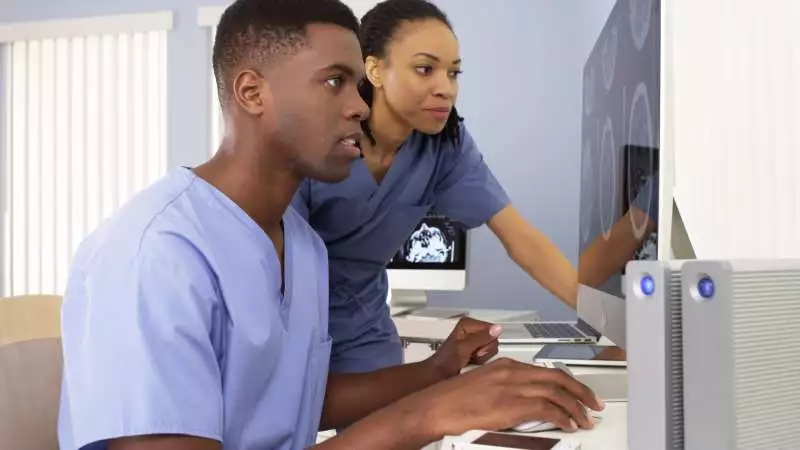Not long ago, technology in nursing represented a new facet of healthcare and the nursing profession. Now, it’s the foundation of the future.
Every day, nurses across the country use technology as a part of their day-to-day jobs. This is not something that will reverse direction. If anything, nurses who earn a RN-to-BSN degree can expect even more technology in nursing in the future.
Exactly what direction it takes is unknown. But already nurses need expertise in interacting with innovative technology. Here are some examples of how technology impacts the nursing profession.
It also shows why earning a BSN or MSN is important as both prepare nurses for using technology in their day-to-day duties.
Electronic Health Records
Most medical operations refer to this as EHR. This represents one of the first areas where hospitals, physician clinics and other healthcare operations adopted the use of technology. The database contains patient records. This includes dates and times for patient visits, treatment given, medications prescribed, doctor’s notes and other pertinent information. It’s an invaluable source of information. Nurses access information from it every day.
Clinical Information Systems
This system is related to EHR. In a clinical information system, all patient records are collected into one database. This includes information from EHR, pharmaceutical data, lab test results, information from medical research on specific conditions and other valuable data.
Drug Retrieval and Delivery Systems
These systems track drug prescriptions and dispensing. They ensure patients receive both the proper medication and correct dosage. The system makes this information easily available for nurses. Nurses also can have drug reference information at their fingertips through these systems.
Mobile Patient Charts
Movies and television shows will have to update their film sets. Almost everyone has seen a doctor or nurse on television consulting a patient’s chart, hung on the end of the bed on a clipboard. Technology in nursing has changed that. Many hospitals now give nurses and other medical professionals hand-held tablets on which they can call up any patient’s chart in a matter of seconds. In some cases, charts have been replaced with wall-mounted PCs. In either case, nurses can download patient information from the central EHR database without leaving the patient’s room.
Medical Devices
Medical devices are one of the most interesting breakthroughs in the Internet of Things, which involves communication between sensors. Patients are given wearable devices, such as a heart monitor. The medical devices use sensors to record vital signs and other information and then communicate it to computer systems at the hospital or physician’s office. Nurses can then monitor information from the medical devices while the patients are at home.
Intravenous Devices
Technology also is used in this area. For example. machines monitor IV bags and lines, sending an alarm to nurses if a kink or block develops. Machine learning now allows IV monitors to automatically switch from a primary IV to a secondary IV, such as one with an antibiotic solution.
Technology in nursing has come a long way in the past decade. Most experts expect it to advance even further in the coming years. Earning a degree in the field where students gain expertise in using healthcare technology is more important than ever. Learn more about how nurses are using technology in the field.
